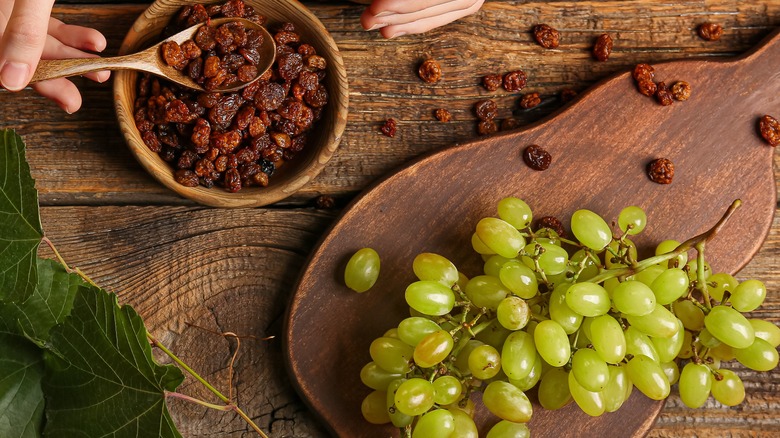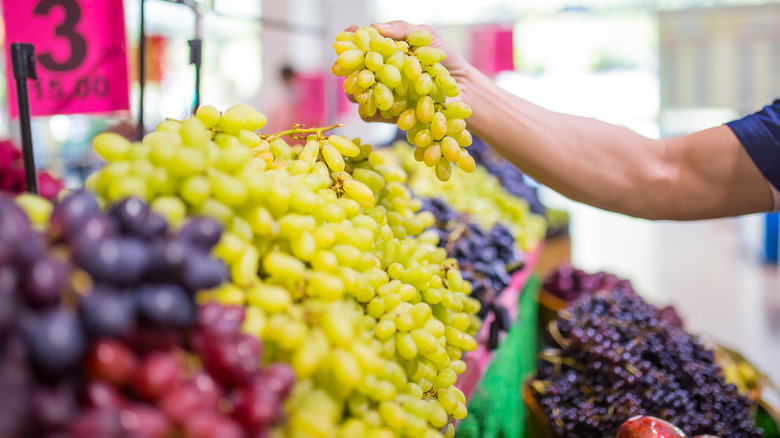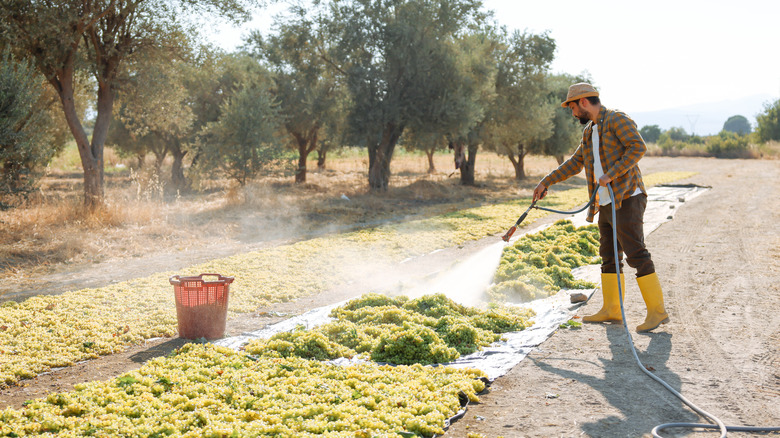The Aesthetic Reason Grapes Are More Expensive Than Raisins
There's a big difference between fresh fruit and dried fruit, and each has its own advantages. Fresh fruit offers more hydration, while usually containing lower amounts of sugar and fewer calories. On the other hand, dried fruit is less perishable, has higher concentrations of fiber and antioxidants, and can be easier to take with you on the go. But perhaps the biggest difference of all between fresh and dried fruit is in price.
This cost difference is especially noticeable in grapes and raisins. Have you ever purchased a bag of plump, juicy grapes at the grocery store and noticed how quickly the dollars can add up, but when you purchase a container of raisins, the cost just doesn't compare? Grapes are more expensive than raisins, and it has to do with how they look. When you walk into the produce section of a supermarket, a display of grapes has to feature fruit that's the perfect color and shape. They have to have unbroken skin and be free of unsightly imperfections. Making that happen takes a lot of work, and that means a higher price for consumers.
It takes a lot of effort to keep grapes looking good for the grocery store
When you go to grab a plastic bag of grapes, you're probably not going to reach for bunches that are burst or have brown spots. But getting grapes to the supermarket while remaining perfectly intact is an especially difficult feat when you consider how prone grapes are to mildew, mold, and pests. Diseases like black rot, powdery mildew, and gray mold are common in grapevines, and crops can easily be destroyed by grape berry moths, Japanese beetles, and other insects.
Growing grapes takes a lot of labor, too, especially when they're intended to be sold as table grapes. An extraordinary amount of care needs to be taken at all stages of the process, including planting, pruning, and harvesting. Unlike some other fruits, grapes don't continue to ripen after they've been picked, so harvesting grapes needs to be timed well. And even after the grapes are harvested, there's still the work of making sure the fruit is stored in the proper climate while being transported to facilities for sale. All of this translates to extra cost.
Raisins require a lot less work
Grapes that will be sold as raisins are grown and cared for pretty differently than grapes that will be sold as table grapes or made into wine. They're often produced from the same type of green grape that you find in grocery stores (Thompson seedless), but by the time they make it to their destination, they don't need to be looking flawless. Since they'll just be made into raisins, their appearance isn't as important, which means growers don't have to look for perfectly round, ripe berries when harvesting.
And once the harvest is complete, the sun does a lot of the work to transform grapes into raisins. Growers either lay the grapes out on paper on the ground or leave them on the vine to dry out in the sun, which is how they become shriveled and dark. Besides being treated with sulfur dioxide to prevent the fruit from turning brown before it dries out, raisin grapes don't need all the same requirements as table grapes. You can make a lot more of them for a lot less money, which is why they don't cost as much.



